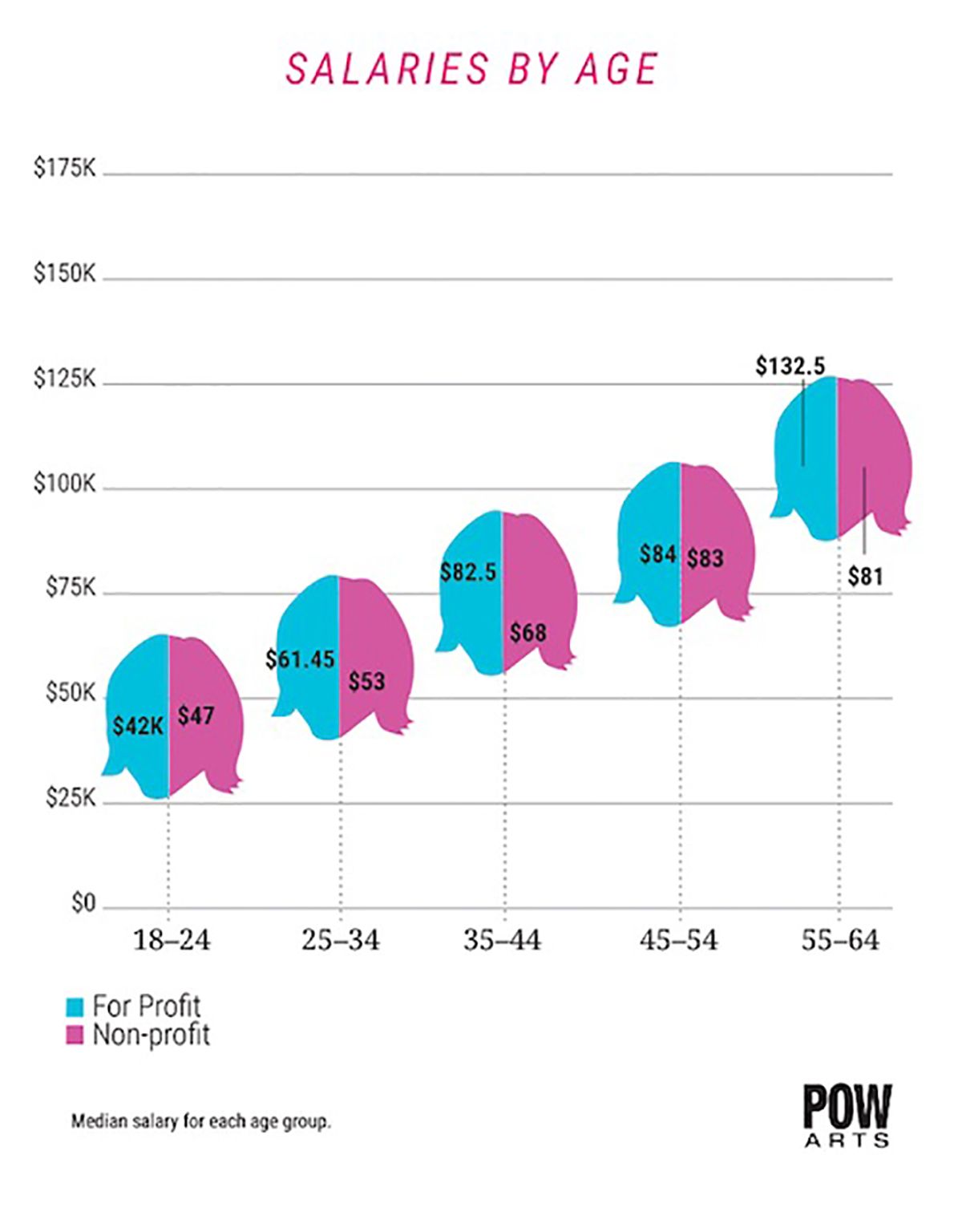Professionals in the visual arts sector in the United States are more likely than not to have a master’s degree, but holding the degree does not have a substantial impact on their average salaries, according to the results of a survey released today by the Professional Organization for Women in the Arts (POWarts).
The organisation collected the data online in February and March of last year in a survey that drew 2,551 responses from employees at for-profit enterprises (such as galleries and auction houses) and non-profit organisations (such as museums and foundations) in the visual arts. Of that number, only 997 respondents supplied data on their current salary that could be incorporated into the results, however, making for a more limited study sample. POWarts said that an overwhelming 89.27% of the respondents were women and 10.73% were men. The survey “began with our membership,’’ explains Sara Kay, the founder of POWarts and the owner of Sara Kay Gallery. “People will send it to their colleague and peers.’’
The data showed that nearly 58.38% of the respondents held master’s degrees, while 33.5% had solely earned only a bachelor’s degree. Yet the median salary for those with master’s degrees was $62,000, versus $60,000 for those who had stopped at a bachelor’s degree. (The median salary for the 7.2% of employees holding a doctorate was $73,500, however.)
Starting salaries in the for-profit and non-profit visual arts sectors were also roughly on par, at $36,750 and $35,500 respectively. When classified by age of the employee, a wider differential emerged between salaries in the for-profit and non-profit worlds. Those between 18 and 24 made a median salary of $42,000 in the non-profit world, versus $47,000 in the non-profit world. That situation quickly reverses, with people from 25 to 34 making $61,450 at for-profits versus $53,000 at non-profits; by the time they hit the 35-to-44 age bracket, the for-profit median salary advances to $82,500 versus $68,000 for the non-profit employee. Rough parity is restored in the 45-to-54 age bracket, at $84,000 and $83,000 respectively. But people between 55 and 64 in the for-profit world earn a median salary of $132,500, versus $81,000 at non-profits.
The numbers are being released even as a Google spreadsheet is being circulated in the museum world on which staff members from across the United States are anonymously posting their annual salaries. POWarts says it hoped its data would help workers in salary negotiations at all stages of their careers and that it plans an online workshop on the topic on 9 July.
“This salary survey will arm professionals of all genders with the information they need to better navigate this opaque world,” says Kristen Becker, a POWarts steering committee member.
The POWarts survey also collected data on salaries by job type, ranging from curatorial assistant (a median salary of $47,000 at a for-profit, versus $46,500 at a non-profit) to visual arts chief executive or president ($132,500 for-profit, versus $100,000 at a non-profit). It also asked about specific benefits, which tend to be more generous in the non-profit visual arts world. Medical benefits were provided by 96% of non-profit employers and 86% of non-profit employers, dental benefits by 89% of non-profit employers and 67% of for-profit employers, and retirement plans by 79% of non-profit employers and 52% of for-profit employers.
Surprisingly, many respondents did not know whether these benefits were offered, POWarts says.


